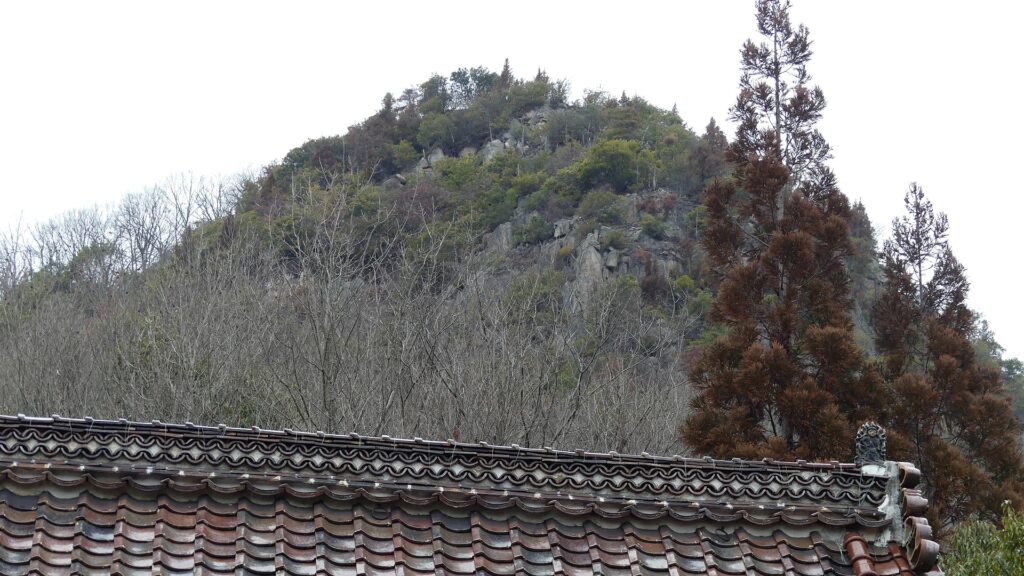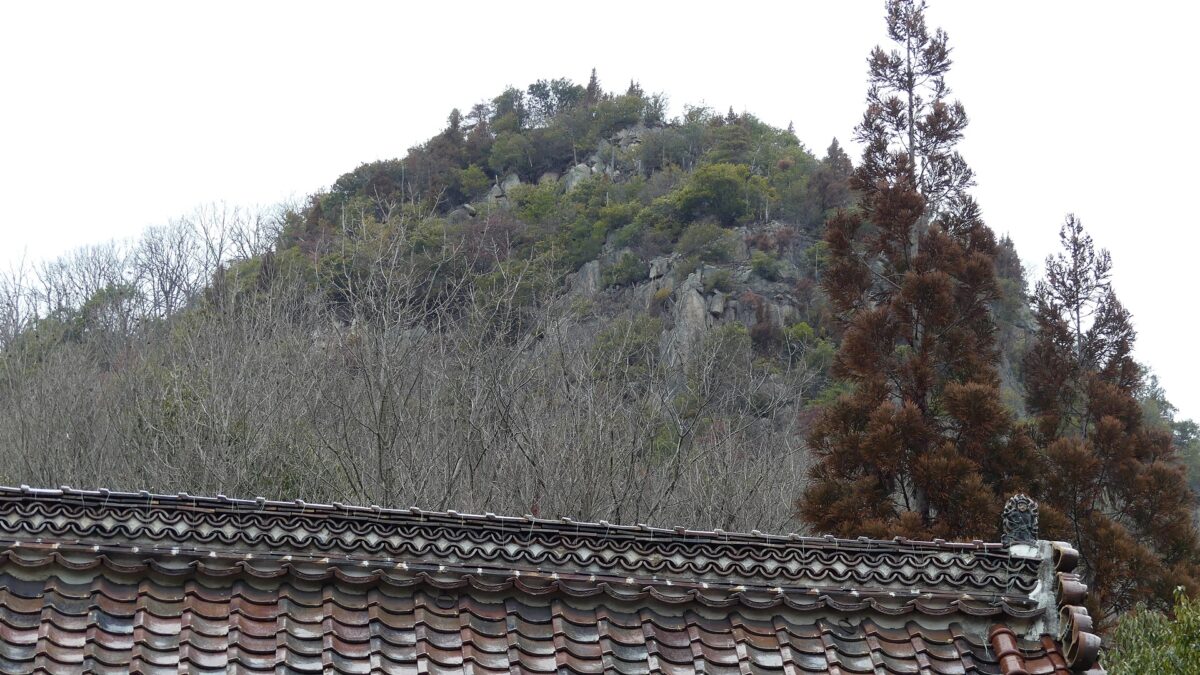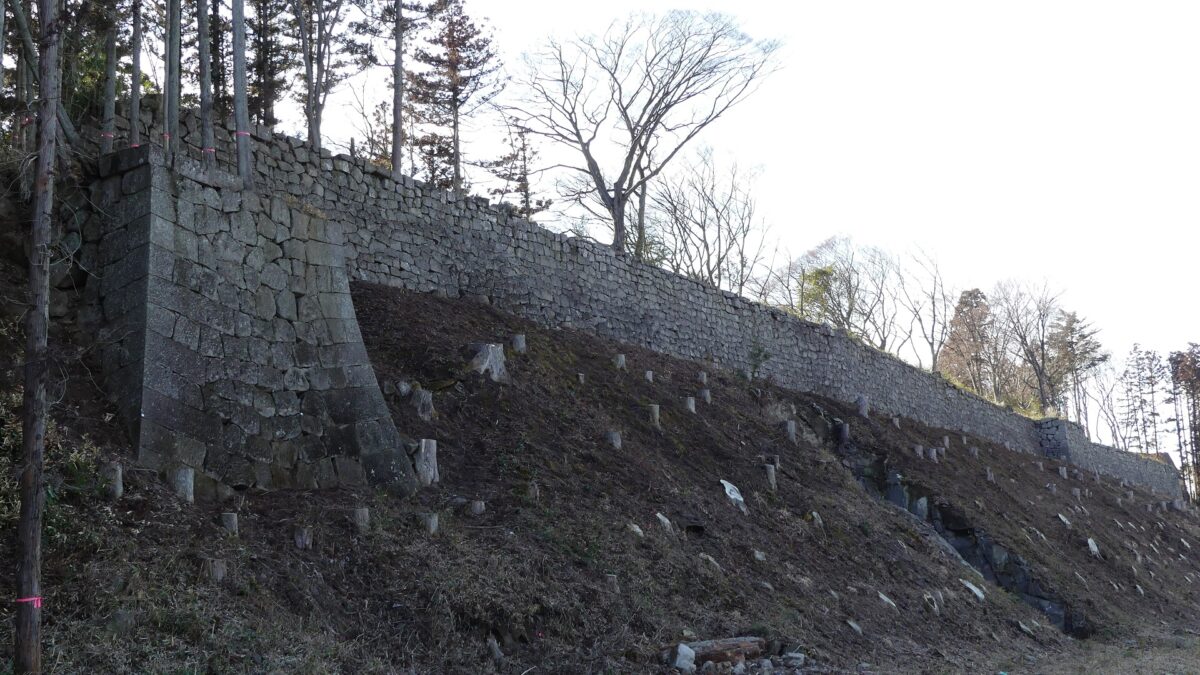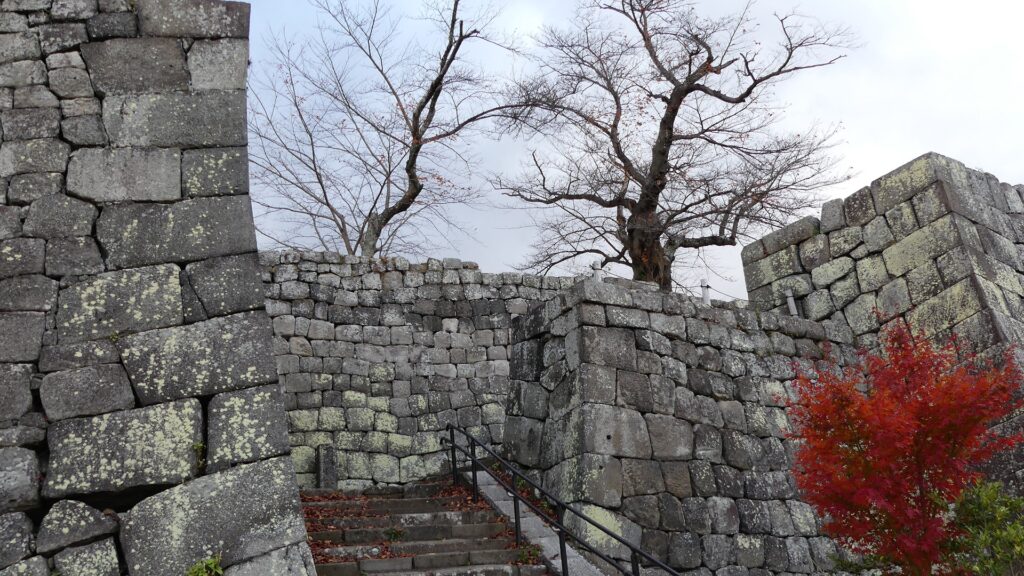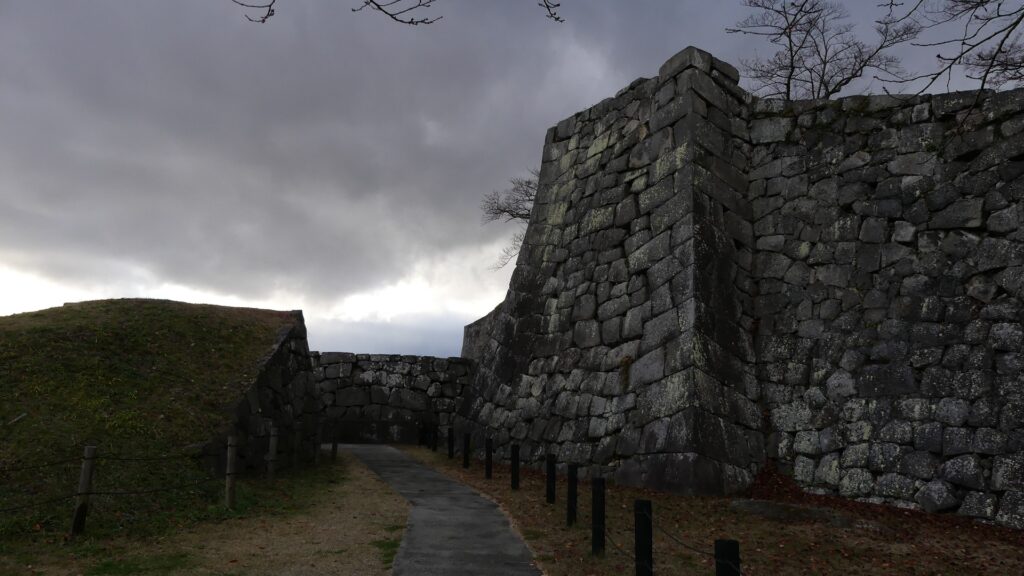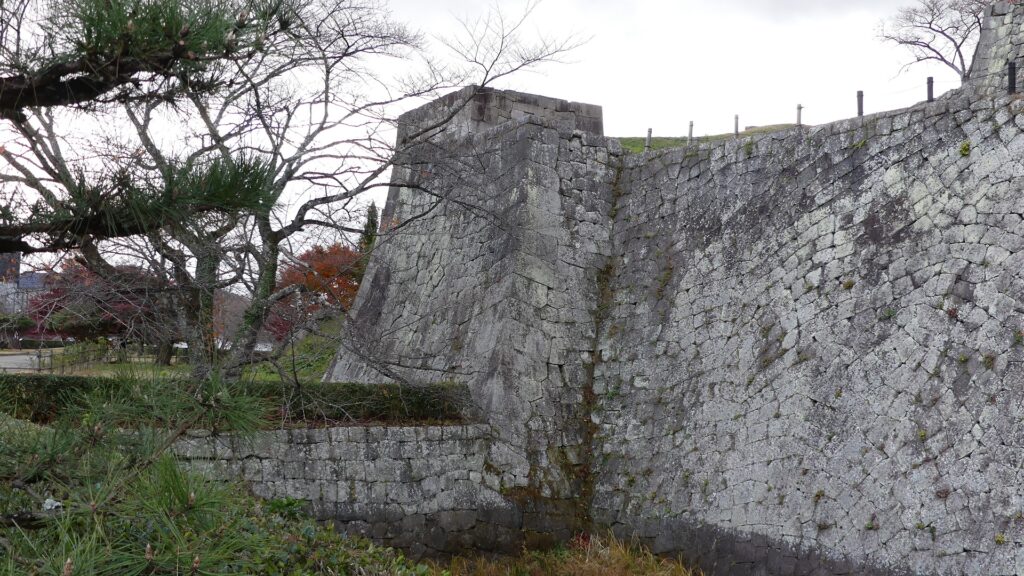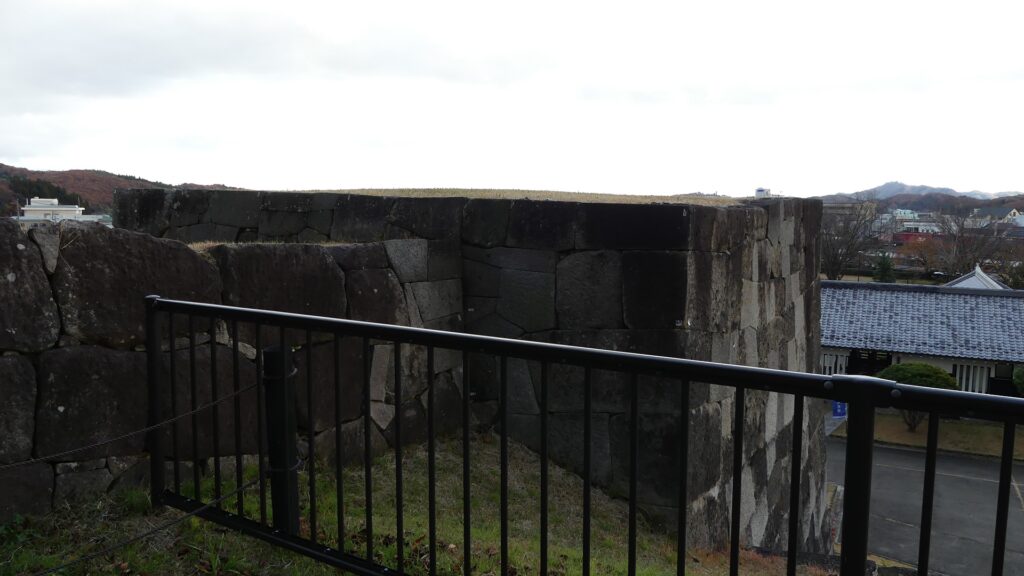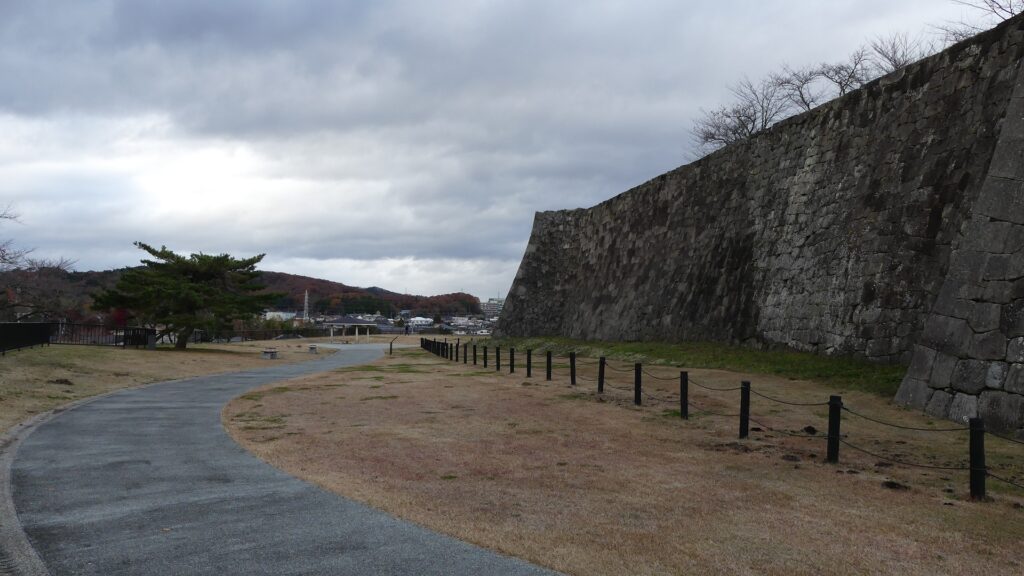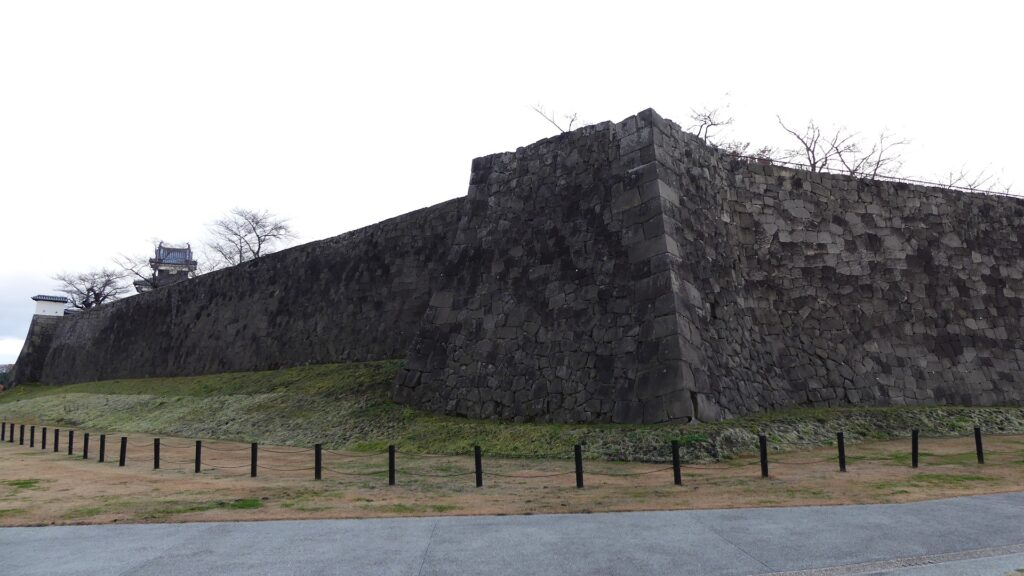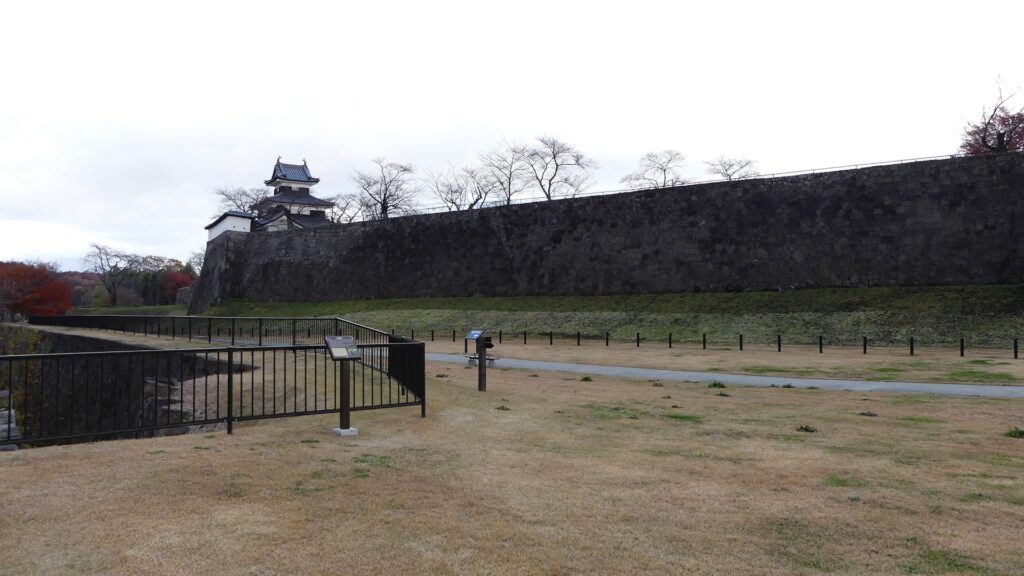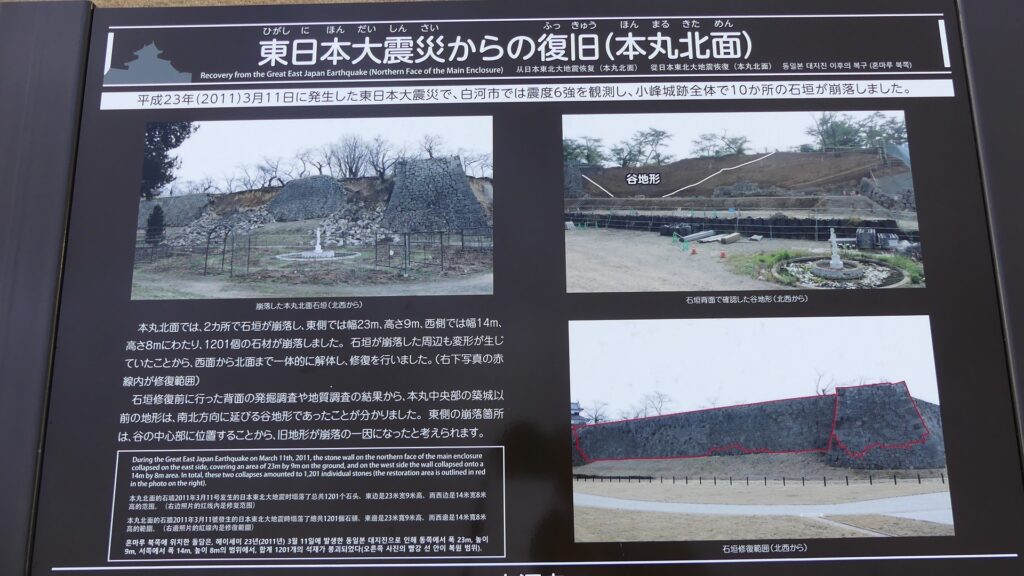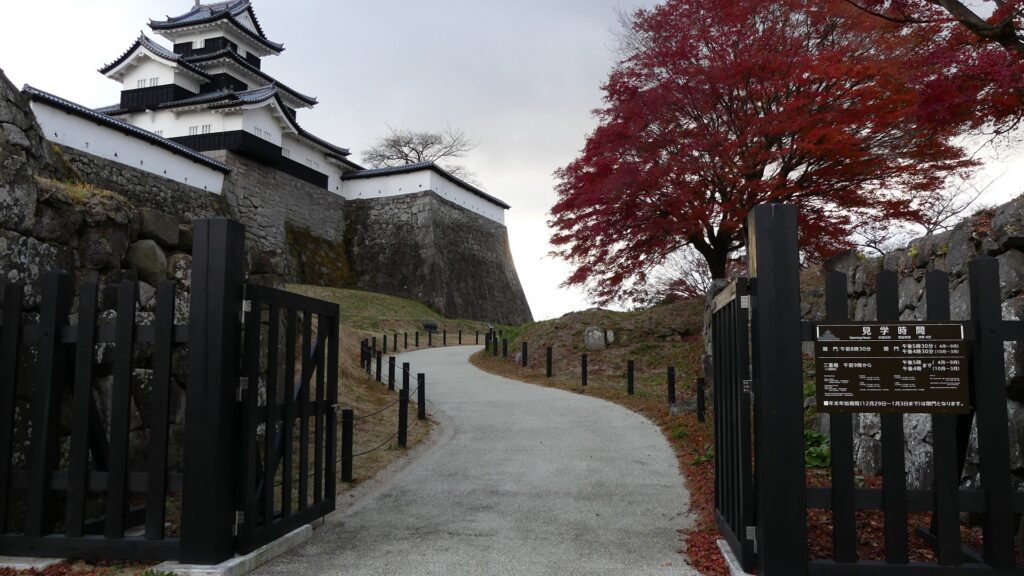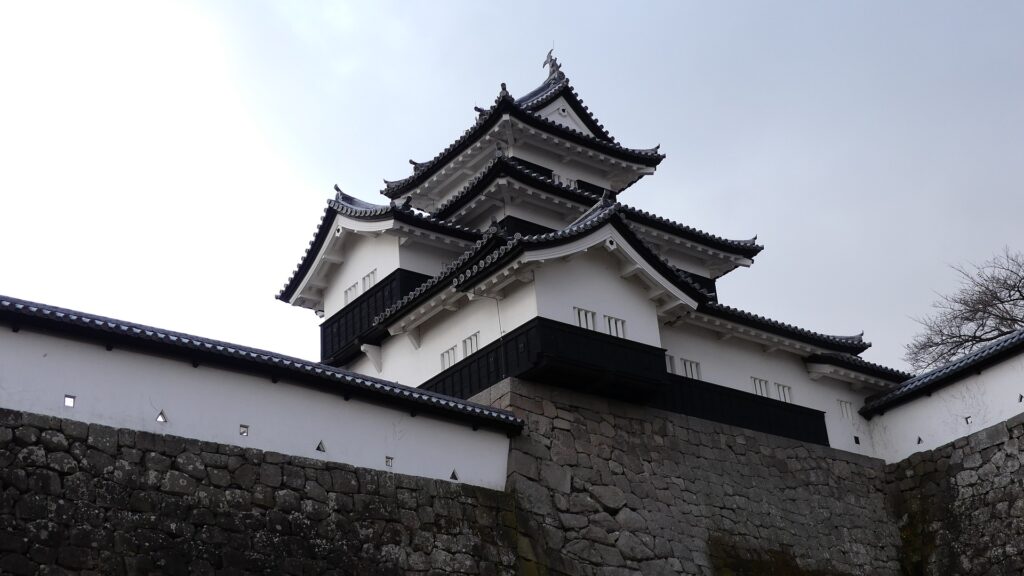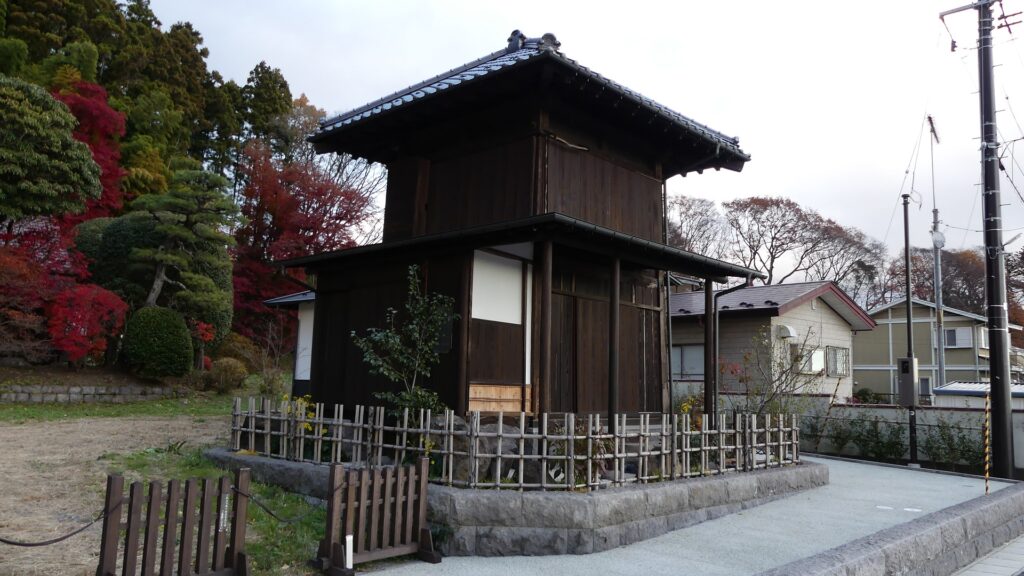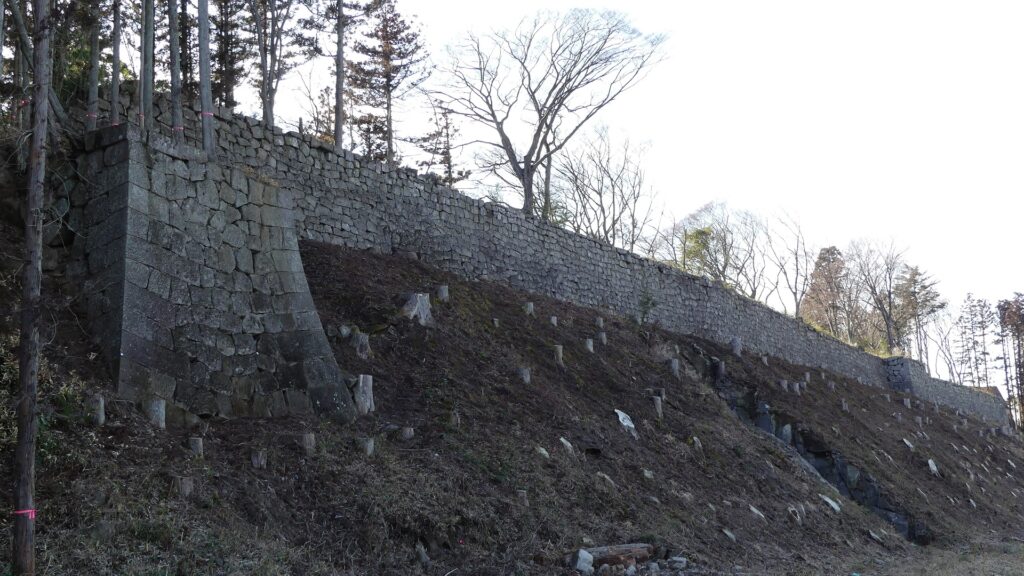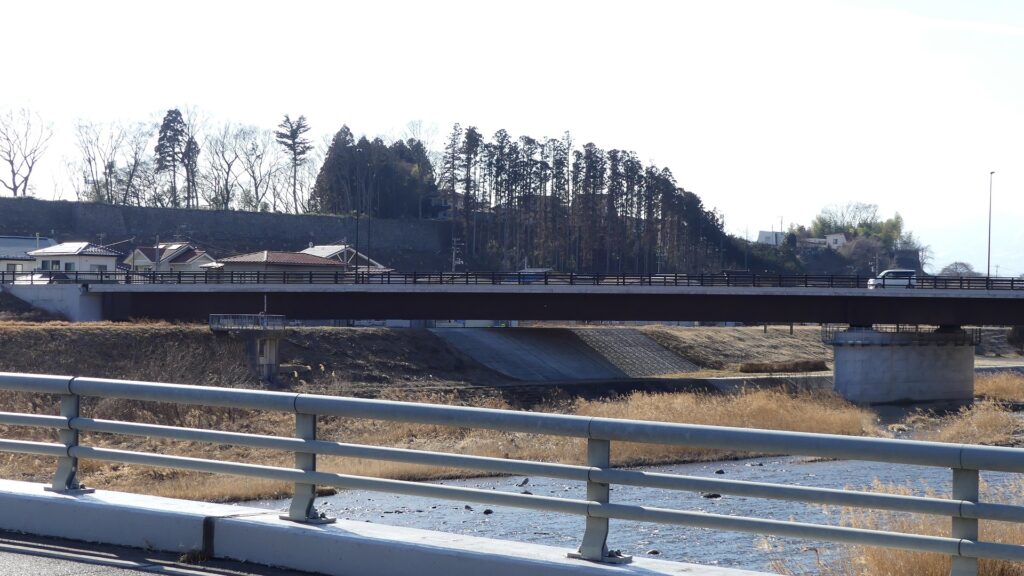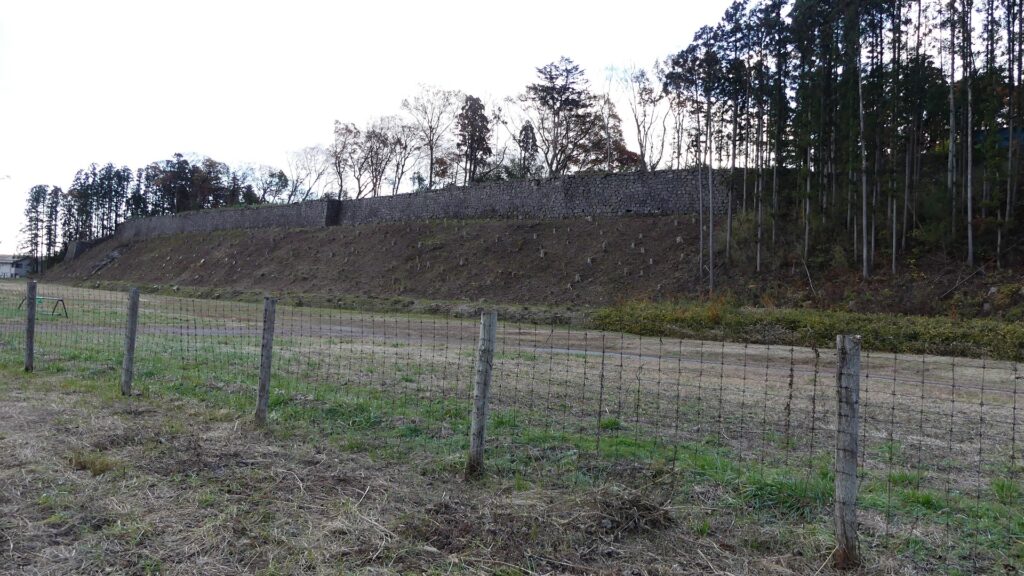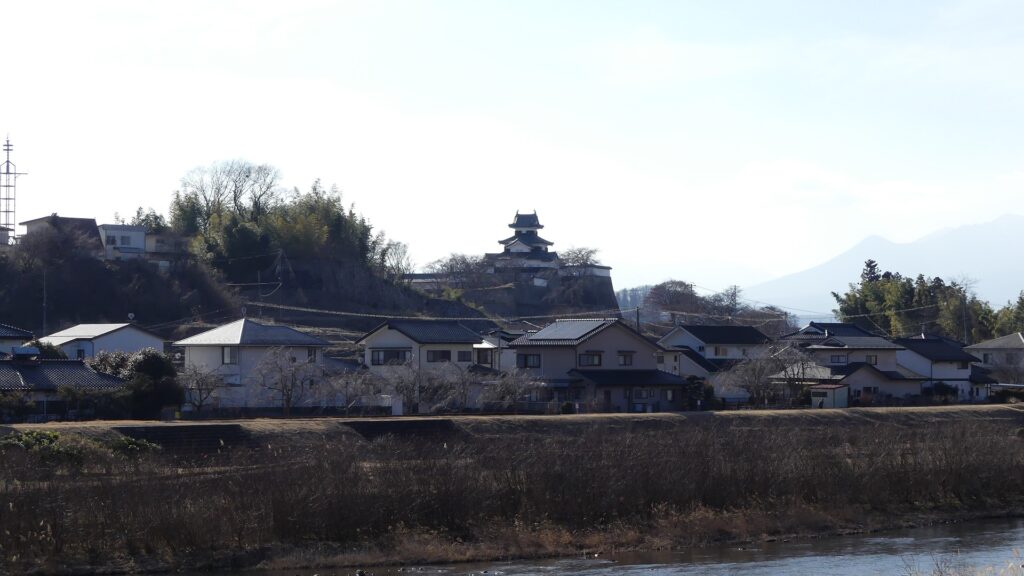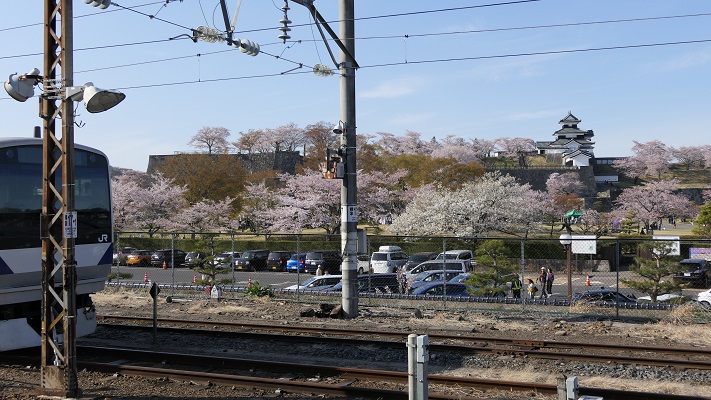Location and History
Kobayakawa Clan first builds Castle on Takayama Mountain
Nitakayama Castle was built and used by a great warlord, Takakage Kobayakawa on Ni-takayama Mountain along Nuta River in modern day Mihara City, Hiroshima Prefecture. The Ni-takayama (meaning the new high mountain, 198m above the sea level) is located on the western riverside of Nuta River while there is another mountain called Takayama (the high mountain, 190m high) across the river. These make a good contrast binding the river, so they are sometimes called Osu-takayama (the male mountain) as Ni-takayama and Mesu-takayama (the female mountain) as Takayama. The reason why Ni-takayama is called “male” seems to be because it is steeper than the other called “female”. In fact, the Kobayakawa Clan, Takakage’s ancestors fist built their castle on Takayama Mountain, not on Ni-takayama. Takakage moved his clan’s home to Ni-takayama for various reasons.
The range of Mihara City and the location of the castles The relief map around the castleThe Kobayakawa Clan originally came from the Kanto Region when they served the Kamakura Shogunate during the 13th Century. The Shogunate gave them Nuta Manor after it defeated the Heike Family and Takehara Manor after the Jokyu War due to their contributions to the shogunate. The clan was eventually split into two, the Nuta-Kabayakawa Clan and the Takehara-Kobayakawa Clan. Takayama Castle was built by the Nuta-Kobayakawa Clan on the Takayama Mountain as their home, but it’s not known when it was built. Both clans sometimes were in opposition of each other but usually they cooperated with each other to increase their power. They gained the force of the warriors who could battle in Geiyo Islands, which would be called Kobayakawa Navy. Their relatives became their senior vassal families, such as the Mukunashi Clan for the Nuta-Kobayakawa Clan, to support their lords.

However, the situation became worse in the 16th Century during the Sengoku Period when many battles happened. Their province, called Aki (the western part of Hiroshima Pref.), was divided by about 30 small lords like the Kobayakawa Clans at that time. That’s why it was targeted by other great warlords, such as the Ouchi Clan from the west and the Amago Clan from the north. For example, Takayama Castle was temporarily occupied by the Ouchi Clan in 1539 and was attacked by the Amago Clan in 1543. In addition, the lords of both Kobayakawa Clans all died young which caused a lot of crisis for the clans.
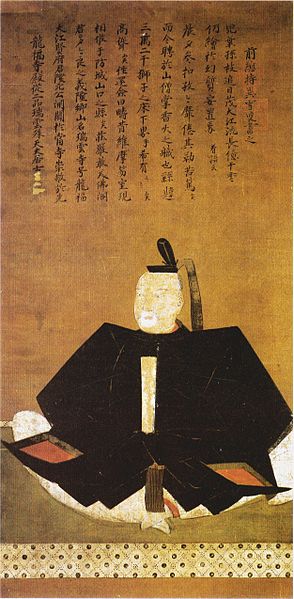

Takakage Kobayakawa coming from Mori Clan builds Nitakayama Castle
Motonari Mori, who would become the greatest warlord in the Chugoku Region, came out as a savior (or a fund raiser for someone). He had also been a small lord of the province but eventually became the leader of the small lords. In 1543, Motonari had his son, Takakage adopted by the Takehara-Kobayakawa Clan with no successor. He also consulted with the senior vassals of the Nuta-Kobayakaya Clan to make Takakage the successor of the clan as well. In 1552, they prohibited the current young and blind lord from taking over the clan. As a result, Takakage combined both Kobayakawa Clans. The first thing he did after the unification was to leave Takayama Castle and build Nitakayama Castle nearby.
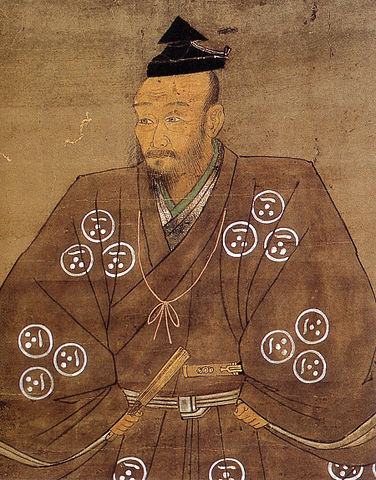
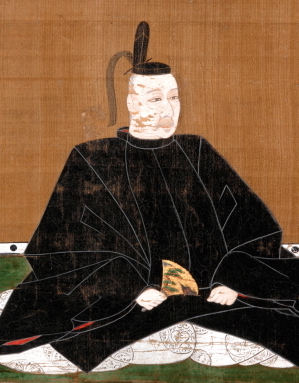
The reasons why he did so are thought as the following; First, moving their castle would radically change the public sentiment. It would also make the retainers gather around the castle to live, which could establish a new hierarchy for Takakage. Second, the mountain, where Nitakayama Castle was built, was steeper and rockier than that of Takayama Castle (that’s why the mountains are also called “male” and “female”.), so it would be stronger. Finally, the foot of the mountain was along the river, which would be convenient for the Kobayakawa Clan to use for water transportation on the Nuta River to Seto Inland Sea.
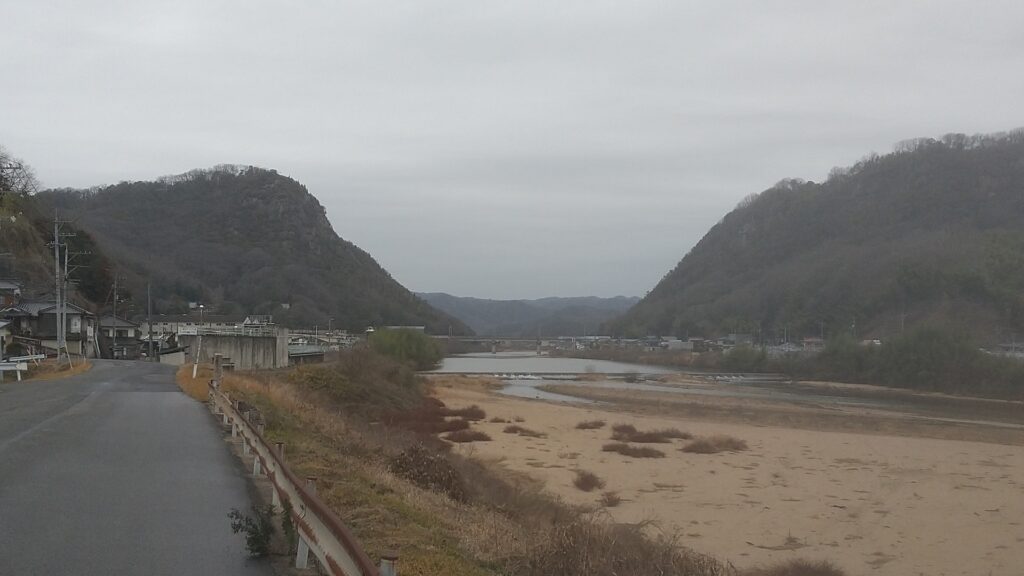
Castle works as Cultural Center as well
A record of the clan says Motonari stayed in Nitakayama Castle for 10 days in 1561. Takakage invited his father to celebrate becoming the governor of Mutsu Province in 1560. They held ceremonies and parties with their retainers, families and servants in the castle during that time. According to the record, there was a building used for hosting guests, called “Kaisho”, on the middle slope of the mountain. They enjoyed seeing “Noh” plays from its reception room and played “Kemari” football at its garden. Historians speculate that there was also a public ceremony hall, called “Shuden”, and kitchens, which were usually a set with the Kaisho building at that time. Motonari and Takakage also joined a Renga poem party at a pavilion on the top. Takakage also held a reading party of Taiheiki historical epic and a tea ceremony. That meant the castle had a library and a tearoom. Overall, the site was not only a castle for battles, but also a cultural center of the surrounding area.
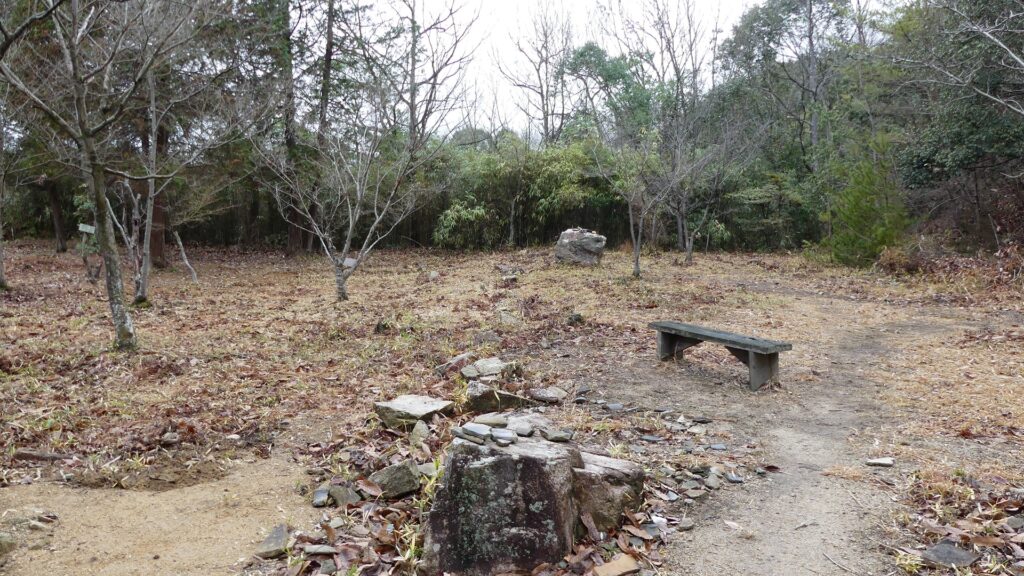
Takakage was not only a son of a great father, but also a great warlord himself. After Motonari died, he continued supporting his parents’ home, the Mori Clan to survive during the unification of Japan by Hideyoshi Toyotomi. Hideyoshi relied on Takakage and his Kobayakawa Navy to complete his unification and his attempt to invade China and Korea. Takakage finally became an independent lord with large territories and was a member of Counsel of Five Elders under Hideyoshi’s government. Meanwhile, he built Mihara Castle in the estuary of the Nuta River as a naval base. As time passed, the castle continued growing. When he retired in 1596, he set Mihara Castle as his home while Nitakayama Castle was eventually abandoned. Its waste materials, such as those of stone walls, were brought over and reused for Mihara Castle.

